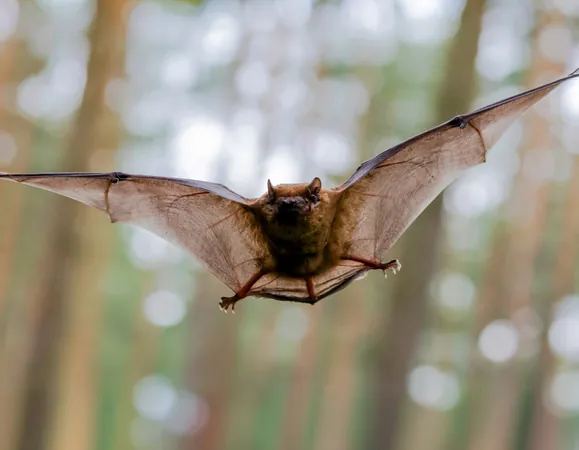
Bats Unleash Their Secret Migratory Skills, Surfing Storms Like Pro Surfers!
2025-01-07
Author: Yu
Bats, often overshadowed by their feathered counterparts, are finally getting the attention they deserve for their astonishing long-distance migrations. A groundbreaking study from the Max Planck Institute of Animal Behavior has unveiled the sophisticated tactics employed by common noctule bats during their strenuous travel.
Revolutionary Insights into Bat Behaviors
Edward Hurme, a postdoctoral researcher at the Max Planck Institute, shared his excitement about the findings, stating, "The sensor data are amazing! Not only do we see the paths these bats took, but we also gain insights into their environmental experiences during migration. This context is vital for understanding the critical decisions made throughout their arduous travels."
The innovative tracking devices developed by MPI-AB engineers are lightweight and smart, weighing only five percent of the bats’ body mass. These gadgets recorded extensive data, such as activity levels and air temperature, providing a comprehensive look into their migratory journeys.
A Unique Migration Path
The study meticulously tracked 71 common noctule bats over their spring migration period—lasting up to four weeks. Unlike the predictable flight paths typically taken by birds, these bats exhibited diverse routes, all generally moving northeast. "There is no set migration corridor for these bats," says senior author Dina Dechmann. This revelation challenges assumptions about bat migration, suggesting they navigate a more intricate landscape.
Interestingly, noctule bats have demonstrated the ability to travel nearly 400 kilometers in a single night—an impressive feat for the species. However, their migration strategy differs significantly from that of birds. "Unlike migratory birds, bats don’t accumulate weight for migration," notes Dechmann. Instead, they rely on nightly refueling, taking short, energized hops rather than a straight flight.
Timing Matters: Riding the Storm
A fascinating aspect of this study was the observation of a spike in bat departures, likened to "bat fireworks" by Hurme. Researchers discovered that these noctule bats were more likely to take flight when air pressure decreased, and temperatures rose—conditions typically associated with incoming storms. "They utilize warm tailwinds for support during their migration," explained Hurme. The data confirmed that bats expend less energy when flying in these favorable conditions, mirroring the strategies observed in migratory birds.
Urgent Conservation Implications
These groundbreaking findings are pivotal for bat conservation efforts, especially concerning wind turbines—one of the leading causes of bat fatalities. Hurme emphasized the potential for future research to develop systems that predict bat migration and allow wind farms to adjust operations to minimize collisions. "We can aid in bat conservation by helping wind farms shut down their turbines during peak migration nights. This research is just a glimpse into the potential discoveries that await as we continue to delve into this black box of bat behavior," he stated.
The Journey Continues
Despite these revolutionary insights, many aspects of the noctule bat's migratory cycle—spanning about 1,600 kilometers annually—remain a mystery. Hurme remarked, "We are still far from observing the entire yearly cycle of long-distance bat migration. However, our new tracking technology has opened a window into understanding their complexities." Continued research is essential for further unraveling the enigma of bat migration, which can significantly enhance conservation strategies and broaden our grasp of animal migration in general.
Stay tuned for more astonishing discoveries in the world of animal migration as researchers uncover the essential role bats play in our ecosystem—transforming our understanding of nature one flight at a time!



 Brasil (PT)
Brasil (PT)
 Canada (EN)
Canada (EN)
 Chile (ES)
Chile (ES)
 Česko (CS)
Česko (CS)
 대한민국 (KO)
대한민국 (KO)
 España (ES)
España (ES)
 France (FR)
France (FR)
 Hong Kong (EN)
Hong Kong (EN)
 Italia (IT)
Italia (IT)
 日本 (JA)
日本 (JA)
 Magyarország (HU)
Magyarország (HU)
 Norge (NO)
Norge (NO)
 Polska (PL)
Polska (PL)
 Schweiz (DE)
Schweiz (DE)
 Singapore (EN)
Singapore (EN)
 Sverige (SV)
Sverige (SV)
 Suomi (FI)
Suomi (FI)
 Türkiye (TR)
Türkiye (TR)
 الإمارات العربية المتحدة (AR)
الإمارات العربية المتحدة (AR)